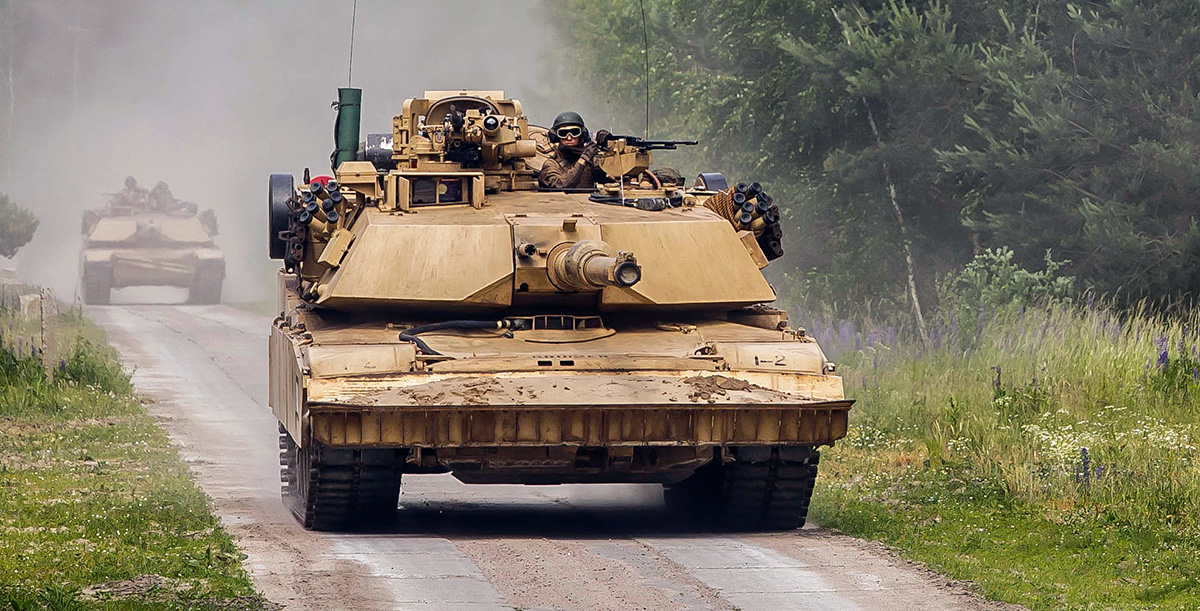European Defence Spending Set to Reach €300 Billion
Poland Leading the Way
Whilst you were not looking, a new regional superpower has emerged in Europe. Poland is determined to build the third-largest NATO army, eclipsing France, Germany, Italy, and the United Kingdom by a wide margin.
Earlier this week, foreign minister Radoslaw Sikoski announced that Poland will immediately boost its defence expenditure, already amongst the highest in NATO, to a full five percent of its GDP. Mr Sikorski justified the increase by noting that the ‘Cold War peace’ has ended. Army chief of staff General Wieslaw Kukula echoed the sentiment: “We need to prepare, and be ready to fight, an all-out conflict.”
Over the last decade, Poland doubled the size of its standing army to 216,000 and shoots for 300,000 personnel by 2030. Though compulsory military service was scrapped in 2008, the military welcomes around 15,000 new volunteers annually into its ranks.
To encourage enlistment and keep professional soldiers from leaving, both pay and conditions were improved. To get a taste of army life, civilians may now ‘enjoy’ up to eight hours of free training with military drill instructors.
Poland embarked on an ambitious force modernisation and expansion drive on a scale that dwarfs the efforts of other European powers scrambling to bolster their long-neglected military capabilities.
Wall of Armour
Before long, the Polish army will field no less than 1,800 main battle tanks – all either new or upgraded and none older than twenty years. This veritable wall of armour includes German Leopard 2, American M1 Abrams, and South Korean K2 Black Panther tanks – that last one a ‘surprise hit’ in tank development. Deliveries on an order for one thousand K2s are set to begin in 2026.
South Korea’s arms industry is booming and has Poland to thank for that. The country also ordered some 800 self-propelled 155mm K9 Thunder howitzers, massive beasts that can hurl projectiles over a distance of sixty kilometres with a firing rate of one shot every five seconds.
Though large purchases of fearsome-looking hardware catch most attention, the Polish defence ministry is acutely aware that unglamorous nuts and bolts make all the difference in warfare. Its Military Research and Development Centre is well funded and investigates fabrics, zippers, helmets, and other minor kit, using feedback from soldiers to shortlist options, considering supply chain resilience as well.
The centre’s deputy commander, Lt Col Marek Trzonek, an army engineer, is particularly worried about the quality of Polish uniforms. He explains that uniforms need to be procured domestically to avoid dependence on foreign suppliers: “However, Poland cannot grow cotton due to its climate whilst the use of polyester wool includes unacceptable compromises on comfort and quality.” The conundrum remains unsolved.
Soviet Legacy
Even a full three decades after Poland ditched Soviet-imposed communism, the country still suffers from administrative rigidity that hampers planning, often ignores feedback, and hinders the proper allocation of kit to individual units. Lt Col Trzonek is trying to introduce a US model for something as (apparently) simple as the distribution of uniforms to troops: “Oftentimes, soldiers get handed a uniform that doesn’t fit. They must then go out and find a tailor to make the necessary adjustments. This is simply unacceptable. We now try to implement base exchanges where service members can select the proper size just like you would in a fashion store.”
This year, Poland plans to signs about 150 contracts with defence contractor for major military systems. The country is procuring additional cruise missiles for its fleet of 48 upgraded F16 fighters and seeks to add one hundred Apache attack helicopters to the air force. Poland’s shopping list is exhaustive and includes hardware that will allow the country to build its own space-based surveillance and communications network.
Military experts caution that size is not everything and draw an analogy to 1939 when Poland had a numerically outsized army, but low combat effectiveness, and faced a smaller German force that overran the country with superior tactics and leadership. Though Poland now boasts the third-largest NATO army, in spending per soldier it only ranks 22nd. Soldiers face shortages of personal equipment and must often make do with clapped out gear. Operation Gear, launched last year, aims to address these shortcomings with massive buys of new rifles, pistols, night vision goggles, and other kit indispensable on the modern battlefield.
Procurement Frenzy
The perceived threat of Russian aggression has spurred Europe into a frenzy of military procurement. Earlier this week, the Dutch government presented a new defence policy paper that boosts the defence budget by €2.5 billion. New hardware acquisitions include two additional frigates, an extra order of F35 fighters, and the reintroduction of a full-sized armoured brigade equipped with fifty or more Leopard 2A8 main battle tanks.
Meanwhile, the navy is in the process of renewing its entire fleet from submarines to destroyers and landing platform docks expanding the number of major surface combatants for the first time since 1994. At some €25 billion annually, the Dutch defence budget now exceeds the NATO’s two-percent norm and eclipses the military expenditure of much larger countries such as Spain and Turkey.
In the wake of Russia’s invasion of Ukraine in February 2022, German chancellor Olaf Scholz announced a €100 billion investment in the country’s armed forces. NATO’s newest member states, Sweden and Finland, have also increased their military spending with the former shedding its pacifist heritage and fast becoming a regional power of note.
Laggards include Spain and Belgium that lack a sense of political urgency and where defence outlays remain limited and expansion plans modest to puny. Though the European Union’s remit does not include defence, Brussels does see a role in trying to coordinate spending and reduce the number of weapon systems employed by its member states to improve interoperability and cut costs.
Whereas the US deploys just one type of main battle tank (M1 Abrams), its European NATO allies field no less than seventeen different types. A similar or worse level of system divergence affects nearly all platforms such as howitzers (2 vs 27), infantry fighting vehicles (2 vs 20), fighter planes (6 vs 20), and destroyers/frigates (4 vs 29). Whilst the US operates just 30 major weapon systems, the armed forces of the EU possess 178 platforms, complicating supply chains, maintenance, and training.
Yankee Go Home?
Europe has the means (and wherewithal) to defend itself even if a second Trump presidency decides to ditch NATO. Last year, EU member states spent in excess of €270 billion on defence, a number set to rise by another ten percent in 2025. EU armies have a personnel strength of slightly under two million, twice as many as serve in the Russian armed forces.
Moreover, Europe outspends Russia four-to-one on defence and the bloc’s combined GDP is about ten times larger as well. The continent also produces some of the most technologically advanced weapon system in the world. Six EU member states feature amongst the top-ten of global arms exporters.
Given these numbers, ‘Trump-proving’ Europe and its defence should not be all that difficult. In fact, there is a tentative case to be made – though not a policy to be implemented – for the superfluous nature of a continued US ‘tripwire’ military presence in Europe.
Go if you must, stay if you will. This is the sort of dealing Mr Trump is familiar with. Though his chances of ‘winning’ the White House have slimmed considerably of late, it is a welcome thought that the continent may not need to sweet talk Mr Trump into keeping NATO intact and may actually tell him, of course wrapped in the kindest of diplomatic terms, to go take a hike – or worse.
Cover photo: M1 Abrams main battle tank during a mechanised assault exercise in Poland and the Baltics.
© 2018 Photo by Commander US Naval Forces Europe-Africa


